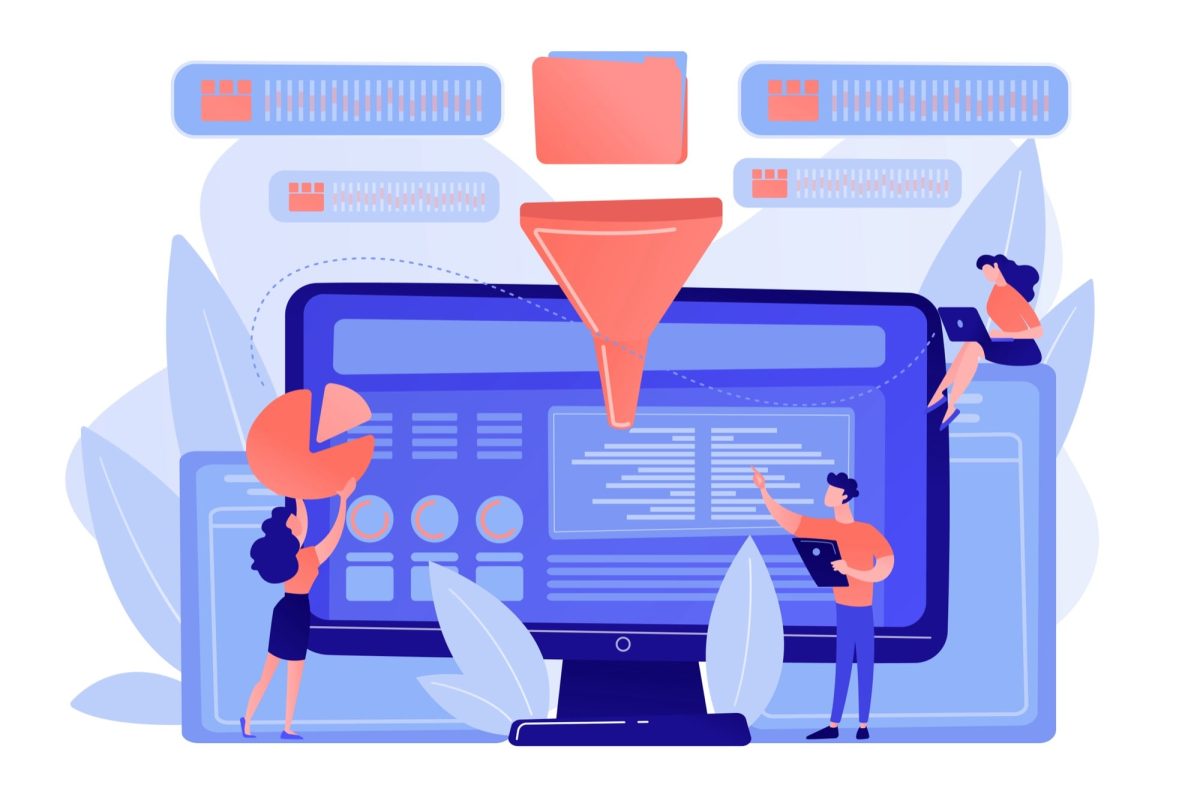In the world of digital marketing, attribution models are important frameworks that help marketers understand which tactics contribute to conversions and sales. Conversion tracking is a crucial part of digital analytics, where we keep track of when a user completes a desired action on a website or within an app. These actions, known as conversions, are often the result of different marketing efforts and can include things like making a purchase or signing up for a newsletter.
Using strong attribution models is essential for accurate conversion tracking. This accuracy gives marketers the power to:
- Allocate budgets effectively: By knowing which channels lead to conversions, resources can be distributed to maximize ROI.
- Tailor marketing strategies: Insights gained from attribution allow for fine-tuning campaigns to better resonate with target audiences.
- Enhance customer acquisition: Understanding conversion pathways helps in crafting touchpoints that attract more customers.
Attribution modeling is more than just giving credit; it’s a strategic tool that guides decision-making and drives continuous improvement in marketing efforts.
Understanding Multi-Touch Attribution Models
The Essence of Multi-Touch Attribution
Multi-touch attribution is an important concept in modern digital marketing that helps us understand the customer journey better. Unlike single-touch models that only give credit to one interaction, multi-touch attribution gives us a complete picture of how customers make their way towards a conversion. It’s like solving a puzzle, where each piece represents a different touchpoint – such as clicking on an ad, opening an email, or interacting on social media – that together reveal the full story of a purchase.
This model looks at all the interactions that happen before a conversion and gives credit accordingly across various marketing channels. What makes multi-touch attribution powerful is its ability to analyze the impact of each channel and touchpoint on the final decision made by the consumer. It goes beyond simple conversion tracking and allows us to understand how effective our marketing efforts are at every step of the way.
Advantages and Limitations
Using multi-touch attribution brings several benefits:
- Enhanced Insight: Marketers gain deep insights into which channels and campaigns are most effective in reaching their target audience.
- Strategic Allocation: It helps identify high-performing channels that deserve more investment, allowing for better budget optimization.
- Holistic View: Provides a comprehensive understanding of the customer journey from initial awareness to eventual conversion.
However, there are also limitations:
- Complexity: Implementing and interpreting data from multi-touch models can be complex and require significant resources.
- Data Integration: It involves integrating data from multiple sources, which can be technically challenging.
- Attribution Accuracy: The accuracy of the model depends on the quality and completeness of the data collected.
Types of Multi-Touch Attribution Models
There are different ways to approach multi-touch attribution, each with its own methodology for assigning value to touchpoints:
1. Linear Attribution
Linear attribution is a fair and equal approach to giving credit. It assigns the same value to each touchpoint in the customer’s journey, recognizing their contribution towards a conversion.
Example: A customer discovers your brand through an organic search, clicks on a retargeting ad a week later, and finally subscribes to your newsletter before making a purchase. In linear attribution, each touchpoint (organic search, retargeting ad, newsletter sign-up) would receive an equal share of the credit for that conversion.
2. First-Touch Attribution
First-touch attribution focuses on the very first interaction with your brand. This model believes that the initial marketing effort which introduced the brand or product sets the foundation for all subsequent actions leading to a conversion.
Example: If a user first comes across your brand through an Instagram ad and then engages with several other marketing efforts before converting, first-touch attribution gives full credit to that Instagram ad.
3. Last-Touch Attribution
In contrast to first-touch attribution, last-touch attribution gives all the credit to the final touchpoint before conversion. This model assumes that the last interaction played the most significant role in influencing the decision-making process.
Example: Regardless of how many previous interactions took place, if a customer’s last action was clicking on an email campaign before making a purchase, last-touch attribution attributes full credit to that email campaign.
4. Time-Decay Attribution
Time-decay attribution considers recency as its guiding principle. It believes that touchpoints closer in time to the conversion event should receive more credit than those that happened earlier in the customer journey. This reflects the idea that recent interactions have a stronger influence on driving conversions.
Example: A potential customer might have seen a Facebook ad one month ago (less credit), clicked on a paid search ad two weeks ago (more credit), and viewed an email campaign one day before making a purchase (most credit). Time-decay takes into account this recency factor when assigning conversion value.
Each multi-touch model offers a different perspective on how we should value customer interactions. The choice depends on our business goals, the specific nuances of our marketing strategy, and understanding which model aligns best with how consumers engage with our brand throughout their journey.
Tools for Implementing and Analyzing Multi-Touch Attribution
Multi-Touch Attribution Tools
The complexity of multi-touch attribution requires robust tools that can accurately capture, analyze, and report on the various customer touchpoints. Among the myriad of tools available, some stand out for their effectiveness in implementing multi-touch attribution models.
Google Analytics
Google Analytics offers basic multi-touch attribution capabilities with models like first interaction, last interaction, linear, time decay, and position-based. They have two versions:
- Universal Analytics: This is the older version of Google Analytics.
- Google Analytics 4 (GA4): This is the newer version of Google Analytics which provides an improved attribution model that is more flexible and user-centric than its predecessor. It leverages machine learning to provide better insights into cross-platform and cross-device conversions.
Adobe Analytics
Adobe Analytics is another popular tool for multi-touch attribution. It has the following features:
- Comprehensive Analysis: Adobe’s tool excels in its deep-dive analysis capabilities. It not only tracks standard touchpoints but also provides advanced segmentation and real-time data processing.
- Custom Attribution Models: Users can create customized attribution models that align with their unique business goals and customer journey complexities.
Visual IQ (a Nielsen company)
Visual IQ specializes in multi-channel tracking, giving credit to both online and offline marketing efforts. It has the following features:
- Cross-Channel Tracking: Visual IQ specializes in multi-channel tracking, giving credit to both online and offline marketing efforts.
- Predictive Analytics: The platform stands out for its predictive analytics feature, which forecasts potential future outcomes based on historical data.
Each of these tools comes with features that are essential for businesses:
- Data Integration: They allow integration with other systems such as CRM or advertising platforms for a unified view of the customer journey.
- User Journey Visualization: Marketers can visualize the paths customers take, identifying patterns and key influencing factors leading to conversions.
- Customization: Flexibility to tailor attribution models to fit specific business needs ensures that insights are relevant and actionable.
- Scalability: As businesses grow, these tools scale with them, handling increased data volume and complexity without sacrificing performance.
By using these multi-touch attribution tools, businesses can:
- Gain a deeper understanding of their marketing efforts’ effectiveness.
- Allocate marketing budgets and resources more strategically across channels and touchpoints.
Advantages of Using Multi-Touch Attribution Tools
These tools not only automate the collection and processing of data but also apply sophisticated algorithms to assign conversion credit across multiple touchpoints effectively. With features such as:
- Real-time Reporting: Businesses can react quickly to changing market dynamics by accessing up-to-date performance data.
- Enhanced Decision-Making: The detailed insights provided help marketers make informed decisions about where to invest their marketing dollars for maximum impact.
Marketers equipped with the right tools can fine-tune their strategies for optimal reach and engagement, driving conversions and ultimately increasing ROI.
Case Studies: Leveraging Multi-Touch Attribution to Drive Results
Real-world examples underscore the transformative impact of multi-touch attribution on businesses’ conversion tracking and marketing optimization. These case studies offer insights into how different companies have harnessed the power of multi-touch attribution to refine their marketing strategies and boost conversions.
Case Study 1: E-commerce Retailer
An e-commerce retailer faced challenges in assessing the impact of social media campaigns on final sales. By implementing a multi-touch attribution model, the company could attribute value to not just the last click but also to social media touchpoints that played a role early in the customer journey. Consequently:
- Increased Ad Spend Efficiency: The retailer adjusted ad spend, investing more in high-performing channels.
- Refined Content Strategy: Insights led to tailoring content that resonated with the audience at different stages of their journey.
Case Study 2: SaaS Provider
A Software as a Service (SaaS) provider struggled with long sales cycles and multiple customer touchpoints across webinars, free trials, and email marketing. Adopting a time-decay multi-touch attribution model allowed for a more accurate representation of each channel’s influence by assigning more credit to interactions closer to the conversion event. Results included:
- Improved Lead Quality: Targeting efforts were honed, attracting leads more likely to convert.
- Optimized Sales Funnel: The provider was able to identify and reinforce critical touchpoints, enhancing the overall sales process.
Case Study 3: B2B Technology Company
For a B2B technology company, determining ROI from various marketing efforts was complex due to numerous interactions spanning digital ads, trade shows, and direct sales efforts. Leveraging a linear multi-touch attribution approach provided an equitable distribution of credit across all touchpoints. This led to:
- Balanced Marketing Mix: A clearer picture of each channel’s performance facilitated a more balanced investment across the marketing mix.
- Enhanced Customer Understanding: Data-driven insights into customer behavior informed content creation and messaging tactics.
These instances affirm that when businesses apply multi-touch attribution models effectively, they acquire pivotal insights that enhance conversion tracking precision. The subsequent actions taken based on these insights can significantly improve marketing ROI and customer engagement strategies.
The integration of multi-touch attribution into businesses’ analytical practices exemplifies a commitment to understanding nuanced consumer behaviors and making data-backed decisions that bolster marketing efficacy.
The Role of Attribution Models in Understanding the Full Customer Journey
Attribution models, especially multi-touch attribution, provide a panoramic view of the customer journey, equipping marketers with the insights necessary for strategic decision-making. By dissecting the customer’s path to conversion, businesses can understand not just the outcome but also the narrative that led there.
- Comprehensive Insights: Attribution models shed light on which marketing activities resonate with potential customers and contribute to their decision to convert.
- Data-Driven Decisions: With knowledge of how various touchpoints influence customer behavior, companies can allocate resources more effectively and tailor their strategies accordingly.
- Optimized Customer Experience: Recognizing the role each interaction plays allows marketers to enhance each stage of the journey, creating a smoother and more personalized experience for the customer.
By using multi-touch attribution, businesses can improve their conversion tracking process and accurately measure the impact of each channel. This leads to a better understanding of what motivates conversions and enables continuous optimization of marketing efforts for better results.
Conclusion
Using attribution models, especially multi-touch attribution, allows marketers to:
- Improve conversion tracking
- Strengthen marketing strategies
By understanding how each customer makes a purchase decision through effective attribution:
- Marketers can allocate budgets more efficiently
- Campaigns can be tailored for maximum impact at every touchpoint
- Businesses gain a competitive edge by responding agilely to consumer behavior patterns
Embracing multi-touch attribution is not just about connecting data points; it’s about crafting narratives of customer journeys that inform smarter marketing decisions. As the digital landscape evolves, those who master the art of attribution will navigate the complexities of conversion tracking with confidence and expertise.




